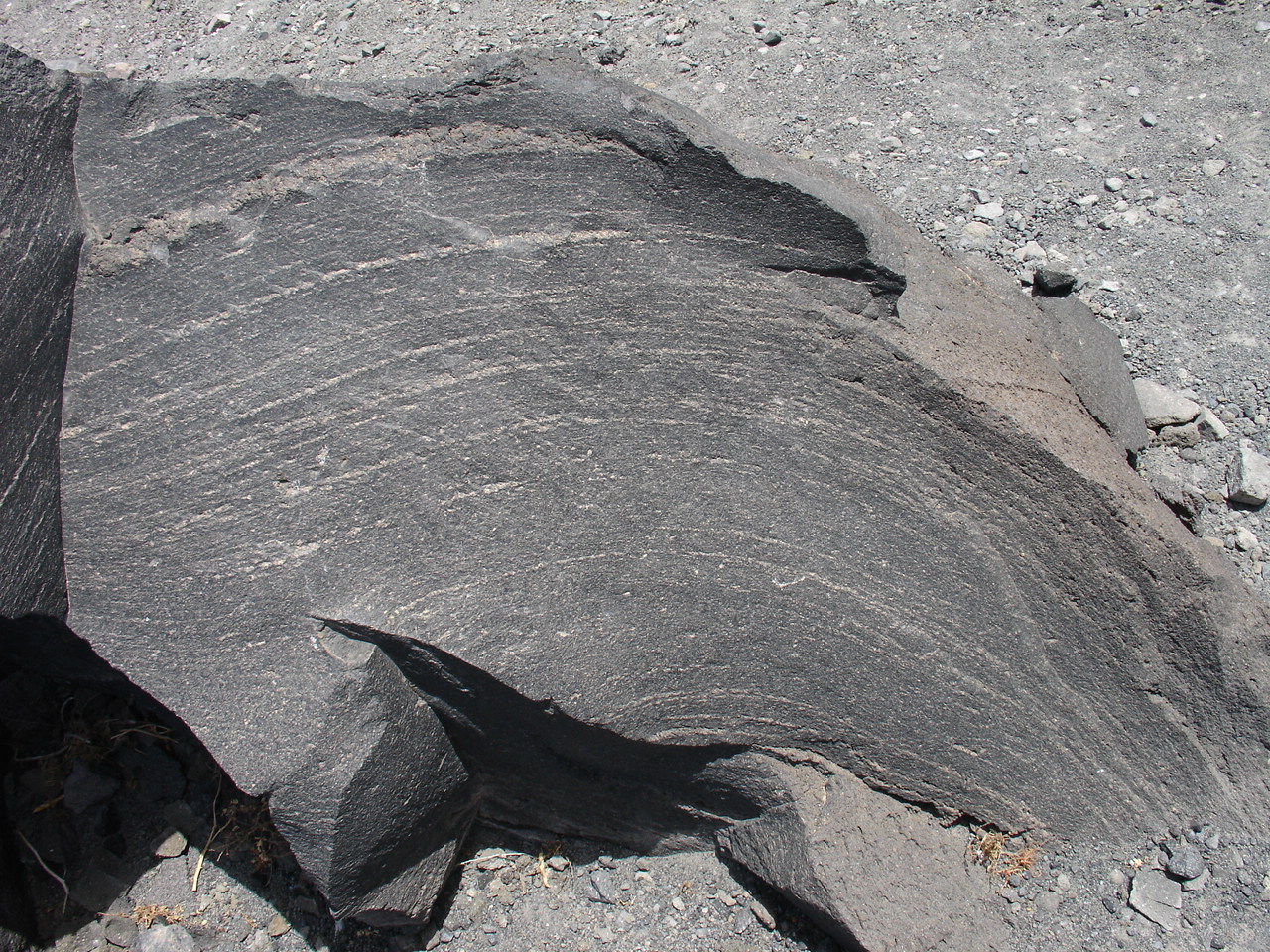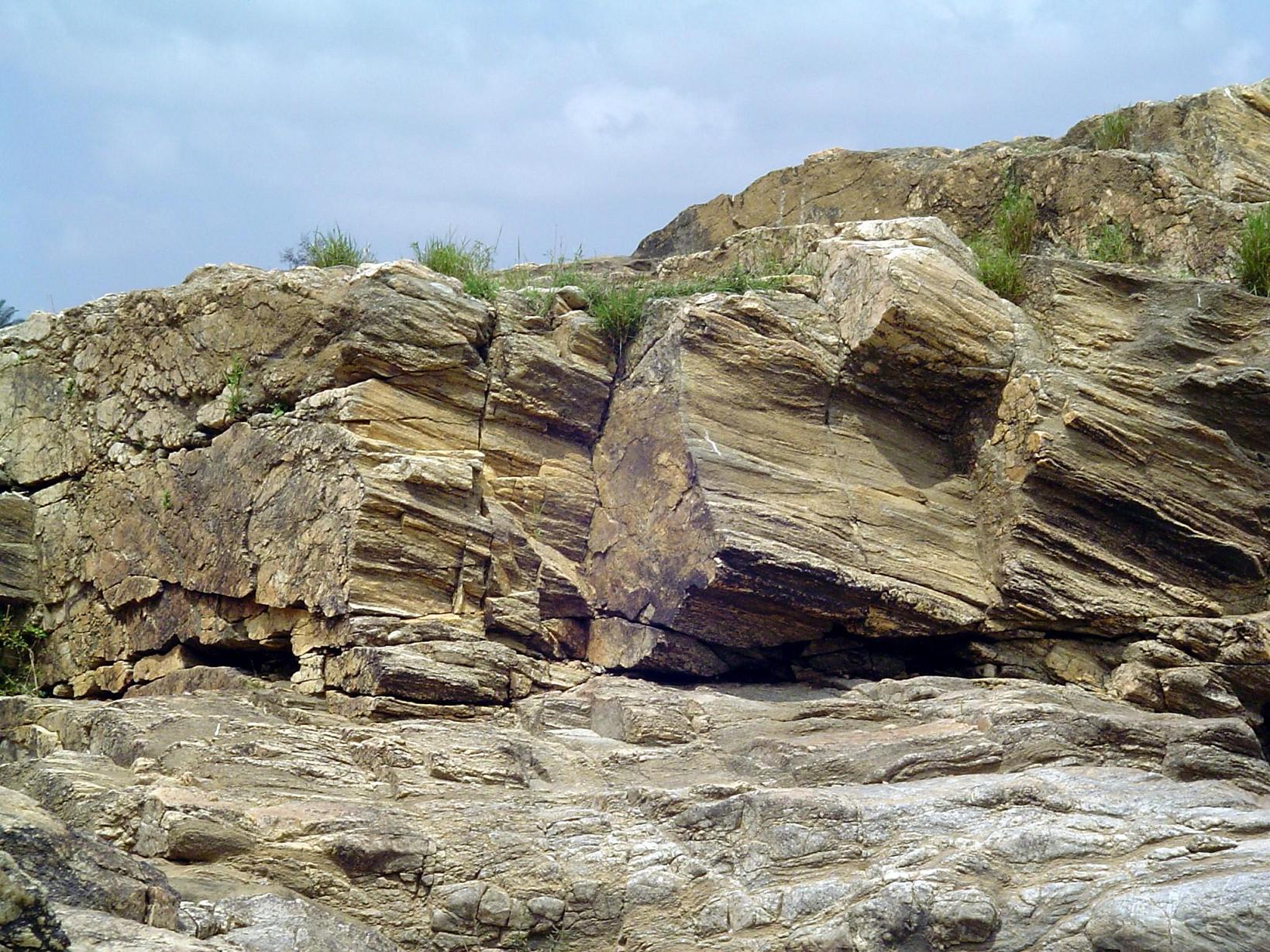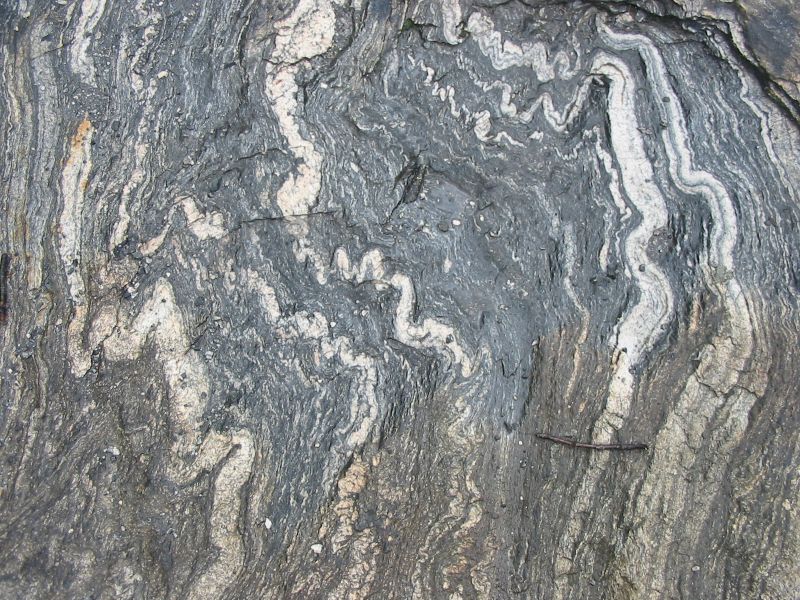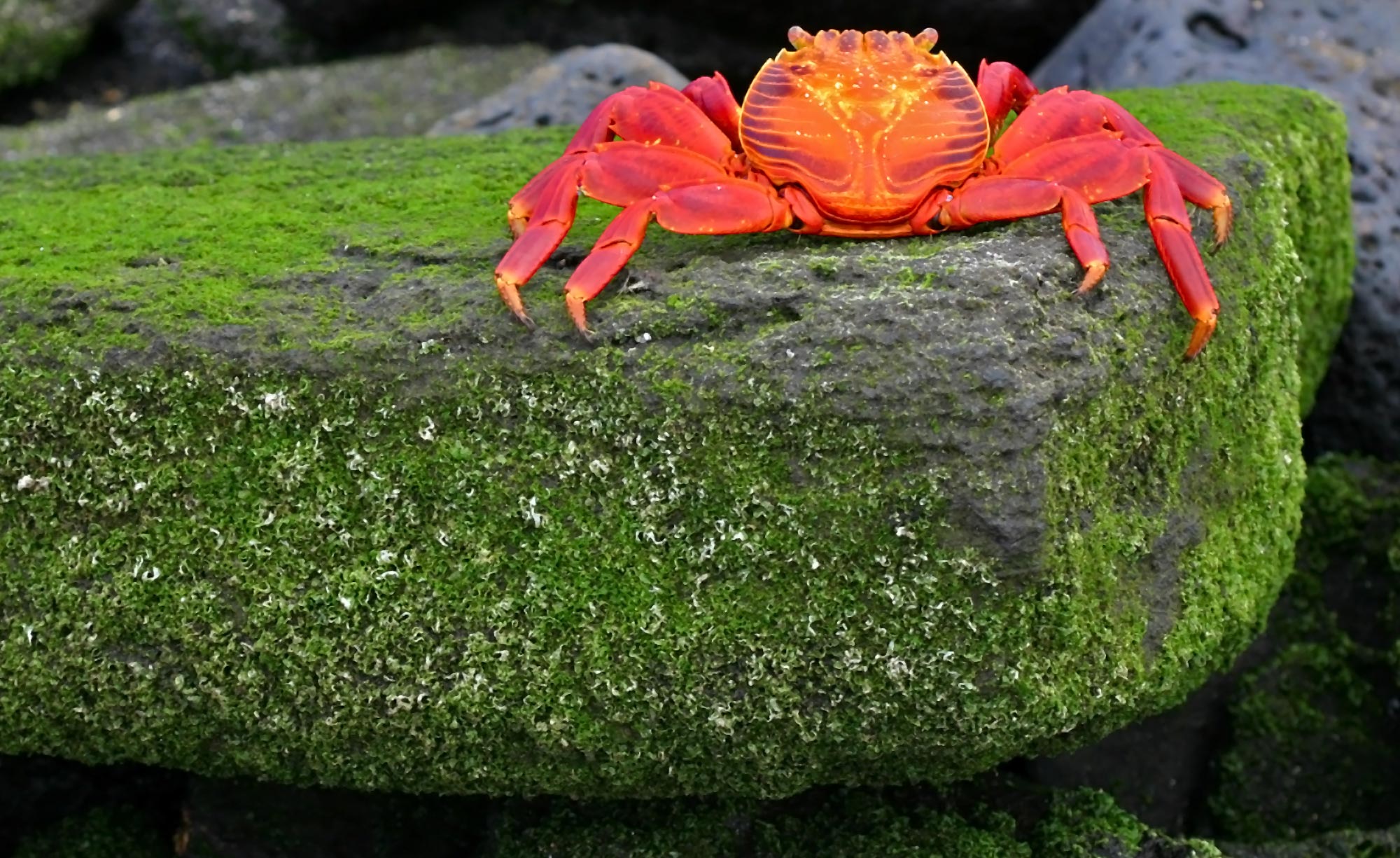There are three basic types of rock: sedimentary, igneous and metamorphic. The differences between them are to do with how they are formed.
Igneous rocks
Igneous rocks are formed by solidification of cooled magma (molten rock) either below the surface as intrusive rocks, or on the surface as extrusive rocks. This magma can come from partial melting of pre-exiting rock in the Earth’s mantle or crust.

An example of igneous rock © Stan Zurek
Sedimentary rocks
Rocks formed from sediments cover 75-80% of the Earth’s land area, and includes common types such as chalk, limestone, dolomite, sandstone, conglomerate, and shale. The sediments are compacted and converted to rock as they are compressed over a very long time period.

An example of sedimentary rock © P S Pratheep
Metamorphic rocks
Metamorphic rock is result of the transformation of pre-existing rock types in a process called metamorphism which means ‘change in form’. The source rock is subjected to heat and pressure causing physical and/or chemical changes. The source rock may be sedimentary, igneous or another older metamorphic rock.

An example of metamorphic rock © Siim Sepp
Previous: Location and Formation – Hot Spots and Volcanoes



